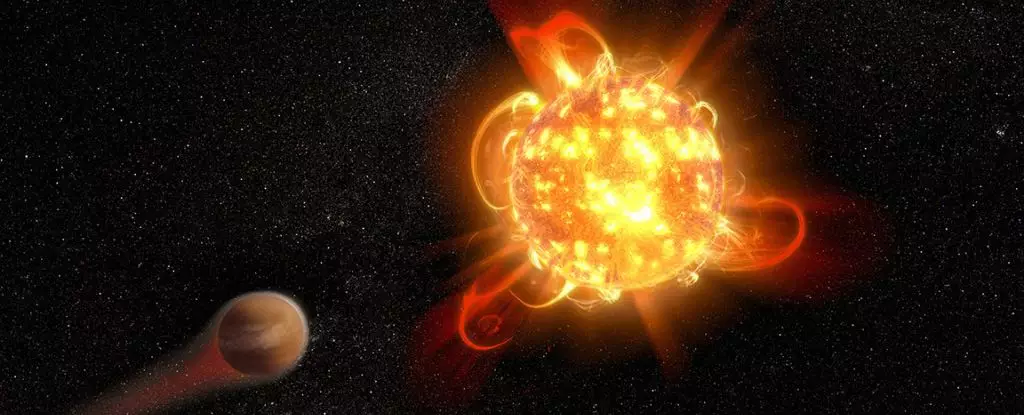Red dwarfs, classified scientifically as M-class stars, occupy a unique position in the cosmos. Although their nature seems to suggest a gentle character due to their smaller mass and significantly cooler temperatures compared to larger stars like our Sun, this perception belies a darker reality. Representing an astonishing 70 percent of the stars in our galaxy, these dim celestial bodies have long piqued the interest of astronomers exploring the potential for life beyond our planet. With their long lifespans and the high likelihood of rocky planets existing within their habitable zones, red dwarfs were initially thought to be favorable candidates in the ongoing quest for extraterrestrial life.
However, recent findings published in a scientific paper have prompted a critical reassessment of the implications these stars have for habitability. Contrary to earlier models that romanticized these systems as safe havens for life, research has illuminated the fact that red dwarfs frequently emit hazardous stellar flares, which could have devastating consequences for nearby planets. This study, which analyzed over a decade of data from the defunct GALEX space telescope, investigated the UV emissions from 182 stellar flare events originating in red dwarf systems. The results provided compelling evidence that previous research may have substantially underestimated the risks associated with UV radiation emitted during these flares.
The phenomenon of stellar flares is both fascinating and alarming. While the high-energy photons produce by these flares can serve as potential catalysts for complex organic molecules—a fundamental basis for life—they can also be incredibly destructive. The crux of the matter lies in the “dose makes the poison” principle; in modest amounts, these photons may promote life, but in excess, they could obliterate it. In red dwarf systems, conditions that might otherwise be conducive for sustaining liquid water could become inhospitable due to the flares’ intensified UV output.
Historically, researchers have modeled the radiation from such flares with a simplistic approach, often using a blackbody distribution that assumes a uniform output of radiation. This methodology suggested that flares from red dwarfs would emit energy comparable to that of a star at around 8,727 degrees Celsius. Yet, the GALEX data suggests a far more complex reality.
The new research demonstrates that an astonishing 98 percent of the studied flares surpassed expectations based on the conventional blackbody model. The findings imply that the simplistic models employed in previous studies might not only simplify the nature of these emissions but could significantly misrepresent the potentially life-threatening environment of planets orbiting red dwarfs.
Flares exhibiting far more drastic UV emissions suggest that this category of stars could turn what would seem to be a stable environment into one riddled with harmful radiation. As a result, we face a seemingly paradoxical reality: while the presence of water and appropriate temperatures might suggest a planet’s readiness for life, the onslaught of intense UV radiation could thwart its potential for forming a viable ecosystem.
As we continue to refine our understanding of the universe and the possible locations of extraterrestrial life, the revelations regarding M-class stars raise critical questions about the habitability of exoplanets that orbit them. Past assessments may have been overly optimistic, failing to account for the sheer unpredictability and danger posed by these stellar flares.
Though the allure of red dwarfs as potential hosts for life is tempting, we must now proceed with caution in our explorations. As scientific methodologies evolve and incorporate more sophisticated models, our perspective shifts toward a more nuanced appreciation of what it truly means to be habitable. Therefore, while red dwarfs may still represent a significant portion of our cosmic neighbors, humanity must recognize the potential challenges they pose for emerging life forms, forever complicating our quest for understanding the universe and the life it harbors.


Leave a Reply